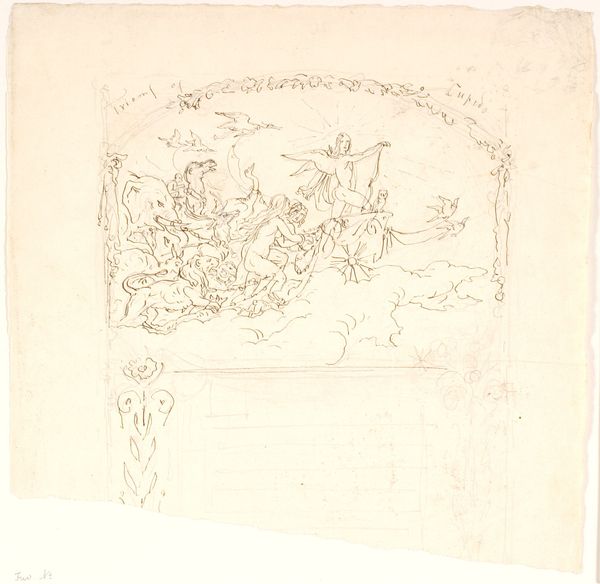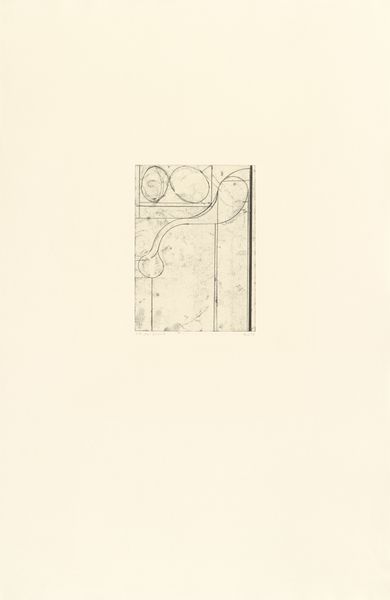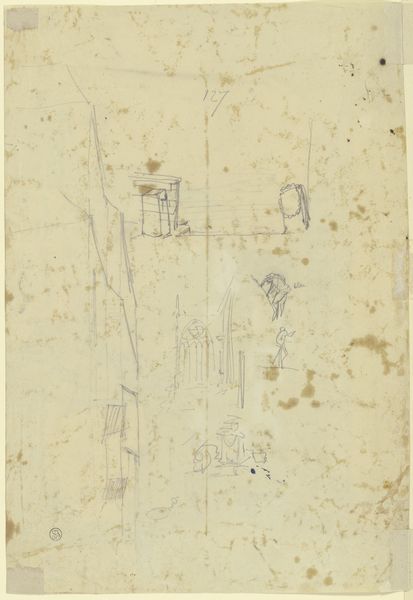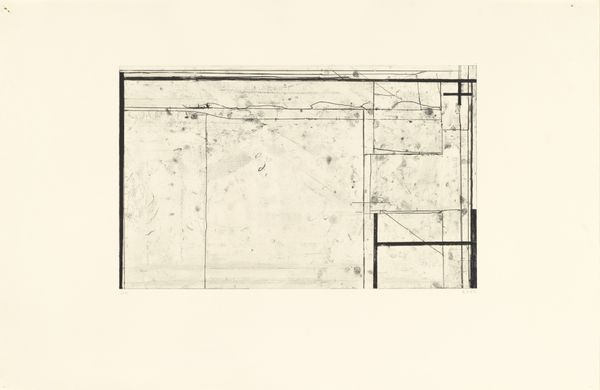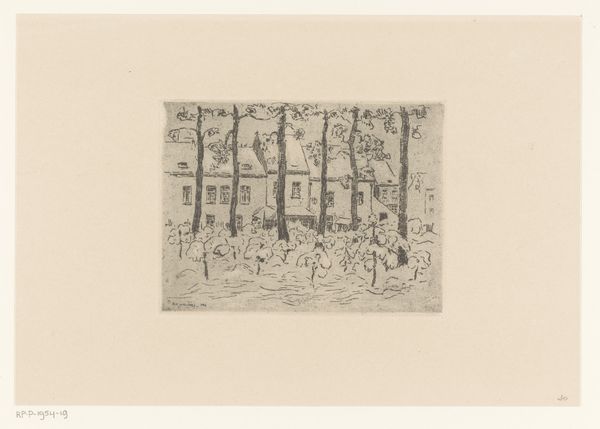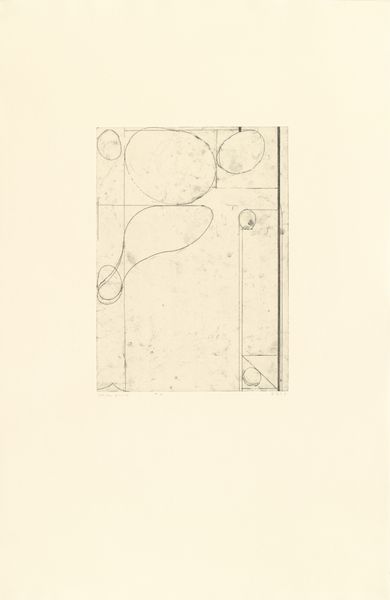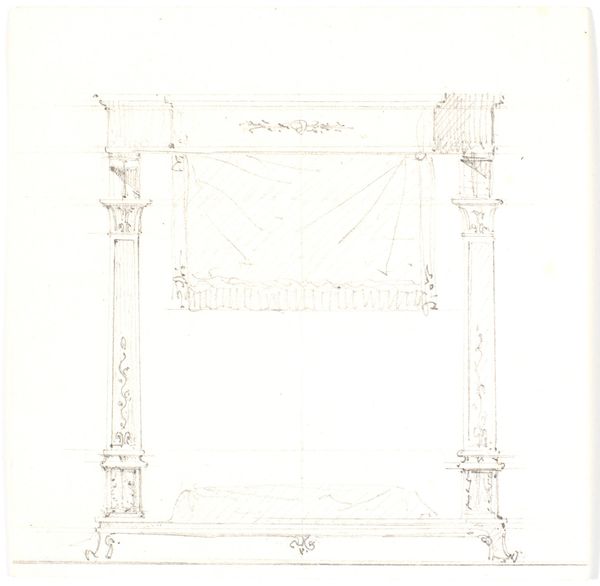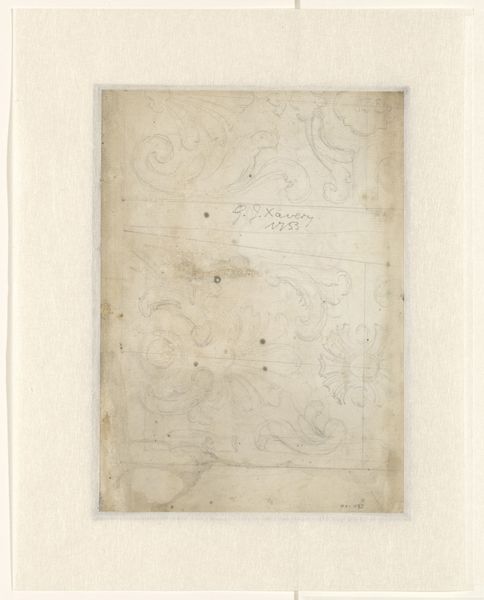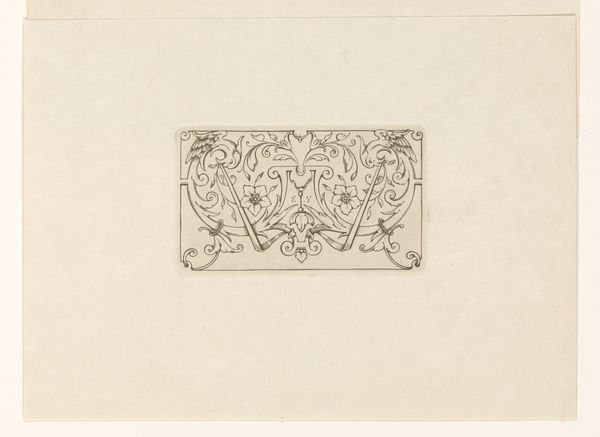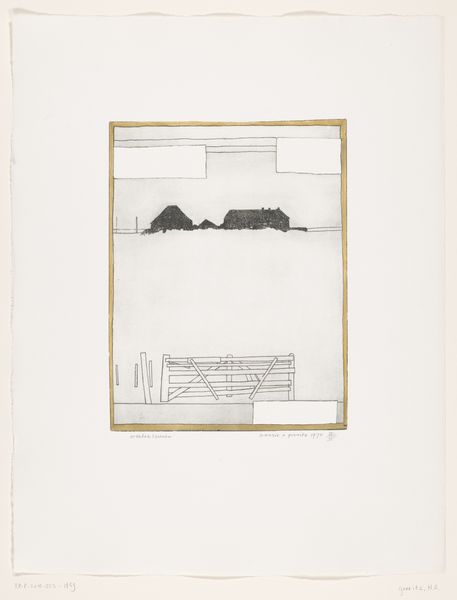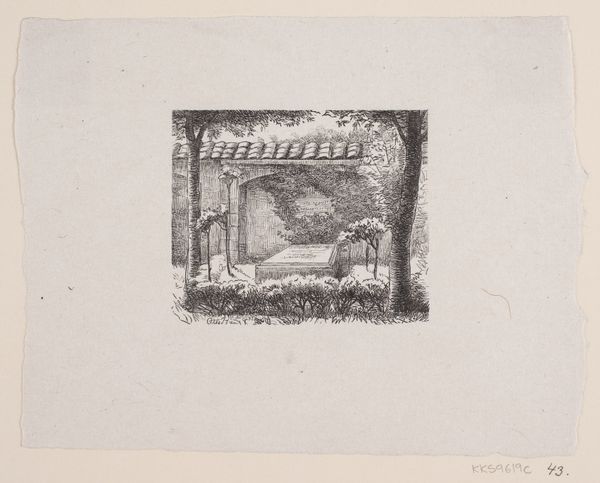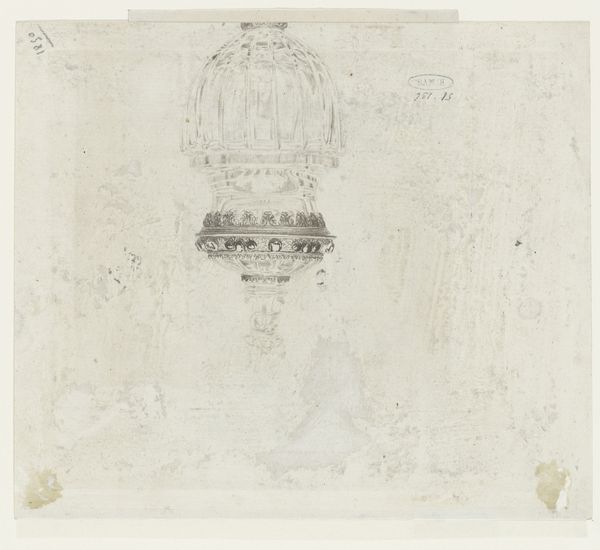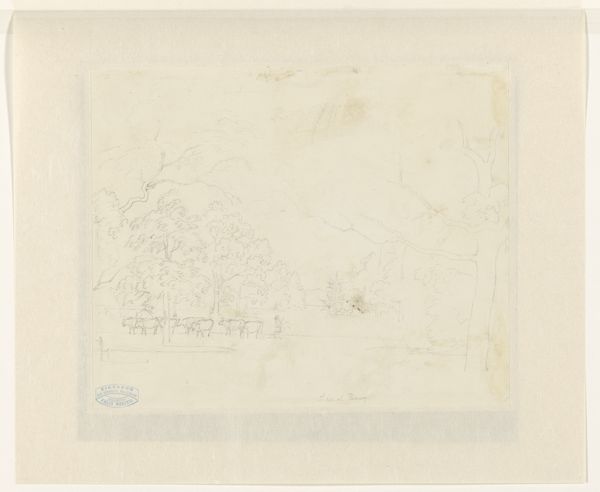
drawing, paper, pencil, architecture
#
drawing
#
aged paper
#
toned paper
#
light pencil work
#
homemade paper
#
ink paper printed
#
parchment
#
old engraving style
#
paper
#
form
#
personal sketchbook
#
geometric
#
pencil
#
line
#
sketchbook drawing
#
storyboard and sketchbook work
#
architecture
Dimensions: height 132 mm, width 148 mm
Copyright: Rijks Museum: Open Domain
Editor: This pencil drawing, “Architectural Element,” by Reinier Willem Petrus de Vries, likely created sometime between 1884 and 1952, gives me the impression of a quick sketch, maybe a preliminary design. I'm struck by how the artist combined freehand drawing with specific measurements. What catches your eye in this piece? Curator: I see this drawing as a document of evolving tastes and the professionalization of architectural design. Notice how it blends artistic freedom with precise notations; this duality reflects the changing role of the architect. By this period, architecture was transitioning from a craft to a more regulated profession, deeply influenced by burgeoning artistic movements. Do you think the act of including measurements transforms the artwork’s purpose? Editor: Absolutely. The numbers scattered across the page remind me of technical drawings, and makes me think that the work’s purpose was to prepare an architectural blueprint. If it wasn’t made public, what could it mean in social terms? Curator: Precisely. This might be a study of public design and accessibility or conversely, perhaps a private fantasy detached from real-world construction constraints. Its display in a museum brings it into the public sphere, forcing us to consider the social implications of its creation, circulation, and even its non-realization. This elevation also alters its meaning, inviting artistic, not just practical interpretation. Do you see any other historical resonances here? Editor: Well, knowing the socio-political forces shaping architectural movements encourages me to think critically about intended purpose of sketches like this. This was clearly made as part of the process of making buildings, rather than being a piece of art that can be viewed by museum audiences. Curator: Yes, I agree. This interplay of function and artistry provides a unique glimpse into how design decisions are shaped, ultimately influencing public spaces. The museum context then further complicates and enriches the original context, making the artwork a window into shifting cultural values surrounding design, labor, and aesthetics.
Comments
No comments
Be the first to comment and join the conversation on the ultimate creative platform.
